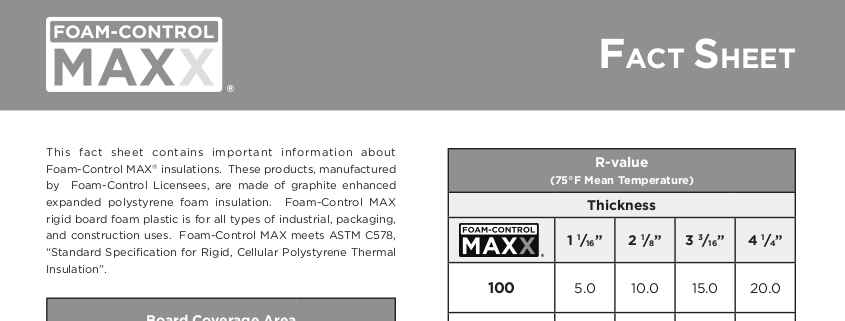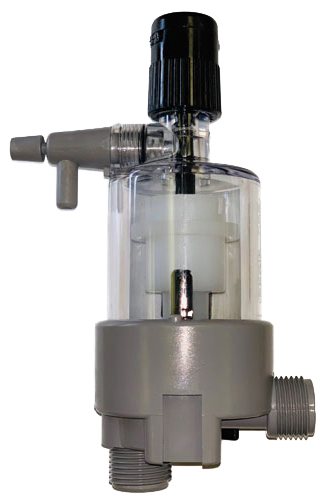The Ultimate Guide to Advanced Foam Control Techniques and Solutions
The Ultimate Guide to Advanced Foam Control Techniques and Solutions
Blog Article
Understanding the Importance of Foam Control in Industrial Processes
In commercial procedures, foam control is commonly a forgotten yet vital facet that directly affects operational performance and product stability. The presence of excessive foam can cause considerable challenges, consisting of interfered with blending and decreased reaction kinetics, which may inevitably affect item quality across various markets such as drugs and food manufacturing. Recognizing the subtleties of foam administration, consisting of prospective improvements and effective approaches, raises vital inquiries concerning best practices and future advancements. What are the ramifications for sectors striving for boosted efficiency and compliance?

The Role of Foam in Market
Foam plays a significant role in different commercial processes, influencing both efficiency and product top quality. In fields such as food and beverage, drugs, and petrochemicals, foam can serve both harmful and useful functions. In the food sector, foam stabilization is crucial throughout processes like whipping lotion or producing beer, where the quality of foam straight influences consumer understanding and item features.
In chemical production, foam can function as a barrier, avoiding the appropriate mixing of reagents, which can cause incomplete responses and suboptimal yields. On the other hand, in procedures like flotation in mineral handling, foam is used to separate important minerals from waste product, boosting recuperation prices.
Moreover, in wastewater treatment, foam development can show the visibility of raw material, functioning as a crucial criterion for process monitoring. The capacity to regulate foam is important for maintaining process security and enhancing functional costs. Comprehending the function of foam in commercial applications permits drivers and designers to execute effective foam management strategies, making sure that foam adds favorably to general procedure efficiency while decreasing its prospective drawbacks.
Usual Challenges of Foam Development
Many sectors encounter considerable challenges as a result of the unplanned development of foam throughout various procedures. Foam can interfere with the effectiveness of procedures, bring about raised downtime and higher functional costs. In sectors such as pharmaceuticals, food and beverage, and wastewater therapy, foam can impede blending, minimize product return, and complicate splitting up processes.
Furthermore, foam can create safety hazards by blocking clear presence, which is essential in settings where precise dimensions and monitoring are needed. The visibility of foam can additionally bring about devices damage, as extreme pressure accumulation may occur in storage tanks and reactors.
Furthermore, the demand for constant intervention to manage foam can divert sources and labor, eventually impacting productivity. Environmental regulations present one more challenge, as too much foam can cause non-compliance problems in effluent discharge, necessitating extra treatment procedures.
Effect On Product High Quality

In chemical manufacturing, foam can hinder response kinetics by restricting gas-liquid contact, leading to incomplete responses and reduced returns. This not only affects the efficiency of manufacturing however can likewise lead to subpar output that do not satisfy regulatory requirements or consumer specifications.
Additionally, in pharmaceuticals, foam formation during formula procedures can present air bubbles right into sensitive compounds, jeopardizing medication efficiency and security. Additionally, foam can create operational concerns such as overflow and equipment breakdowns, raising downtime and upkeep expenses, even more affecting item quality and consistency.
Approaches for Reliable Foam Control
Attending to the obstacles positioned by foam is vital for maintaining item high quality across numerous industrial markets. Efficient foam control strategies are important to reduce the damaging impacts of foam development, which can disrupt procedures and compromise item honesty.
Among the key techniques involves the selection and application of appropriate antifoaming agents. These agents are designed to lower surface stress and hinder bubble formation, and their efficiency can vary based upon the particular process problems. Normal monitoring of foam degrees is critical to make sure prompt intervention, enabling operators to apply antifoaming representatives prior to foam comes to be a substantial problem.
In addition, maximizing process parameters such as temperature level and frustration can play an link important duty in foam monitoring. Reducing frustration intensity or adjusting feed rates can decrease foam generation. Implementing mechanical foam control tools, such as foam breakers or defoamers, can likewise give efficient solutions for high-foaming applications.
Educating personnel on foam management strategies and the significance of preserving optimal operating problems further boosts foam control initiatives. Foam Control. By using a mix of these methods, sectors can effectively manage foam, guaranteeing operational effectiveness and preserving the high quality of their products
Future Fads in Foam Monitoring
Exactly how will developments in modern technology form the future of foam management in industrial procedures? The combination of man-made intelligence (AI) and machine learning will reinvent foam control strategies, enabling real-time tracking and adaptive reactions to foam formation. These modern technologies can evaluate historical data and operational criteria to forecast foam behavior, enabling preemptive steps that enhance process efficiency.
Furthermore, the advancement of sophisticated foam control agents, consisting of click for more bio-based and ecologically friendly alternatives, is getting traction. These innovations not just alleviate foam yet also align with sustainability goals, minimizing the environmental footprint of industrial procedures.
Automation will additionally play a crucial function, as automated foam control systems can optimize the dose of defoamers based on real-time dimensions, lessening waste and enhancing effectiveness.
Additionally, the adoption of IoT (Internet of Points) devices will certainly facilitate smooth interaction in between devices and foam control systems, ensuring an all click here for more info natural method to foam monitoring. (Foam Control)
Conclusion
In conclusion, reliable foam control is crucial for enhancing commercial procedures throughout various fields. Carrying out strategic foam monitoring methods, including the use of antifoaming agents and procedure optimization, minimizes these difficulties.
In the food industry, foam stablizing is important throughout procedures like whipping cream or producing beer, where the high quality of foam straight impacts consumer assumption and item features.
Comprehending the function of foam in industrial applications permits engineers and drivers to implement effective foam administration techniques, ensuring that foam adds favorably to overall procedure efficiency while lessening its possible downsides.
Routine surveillance of foam levels is vital to make certain prompt treatment, permitting drivers to use antifoaming representatives before foam ends up being a considerable concern.
Executing mechanical foam control gadgets, such as foam breakers or defoamers, can also provide efficient solutions for high-foaming applications.
The assimilation of fabricated knowledge (AI) and equipment discovering will certainly transform foam control methods, making it possible for real-time tracking and adaptive actions to foam formation.
Report this page